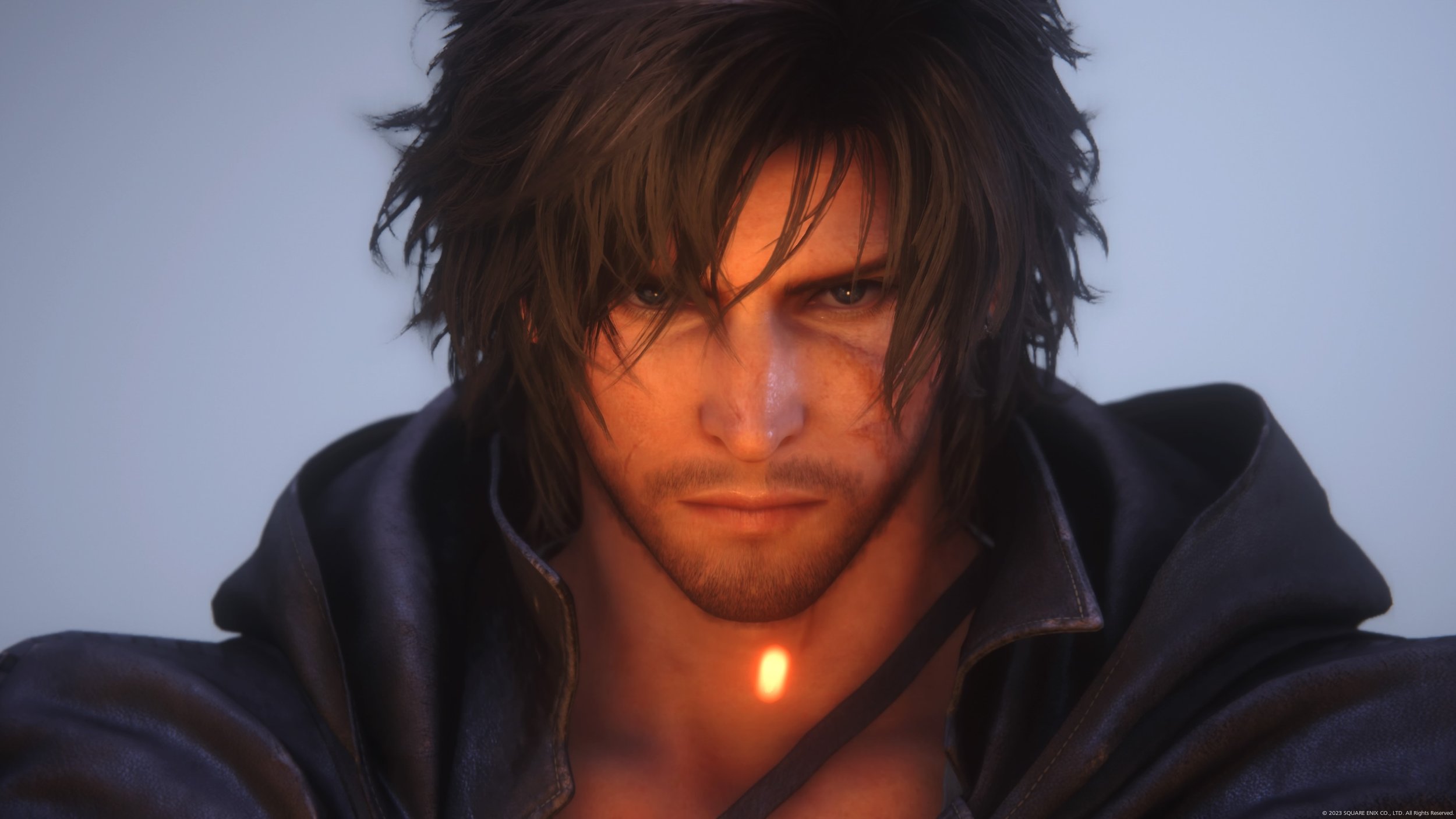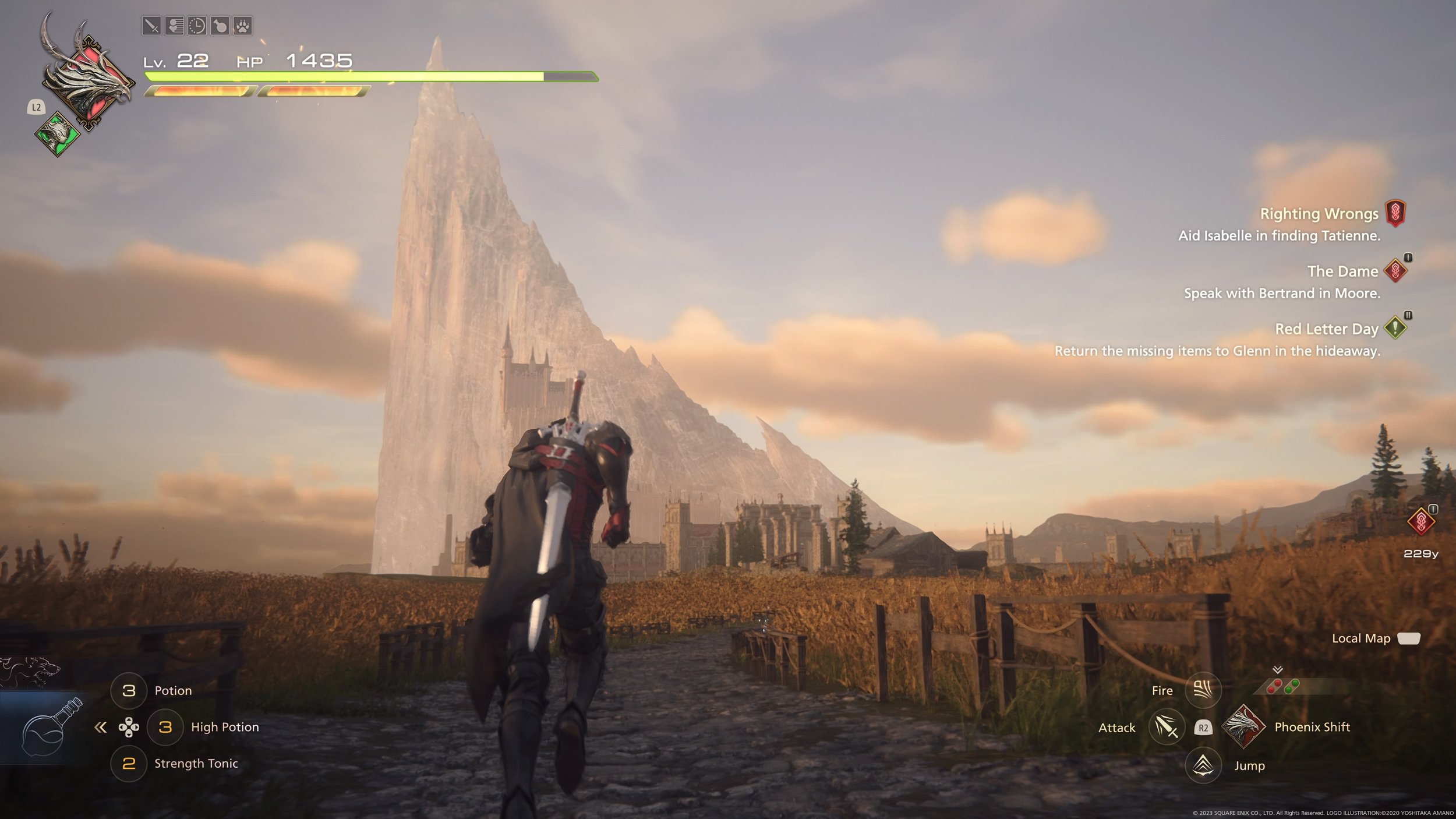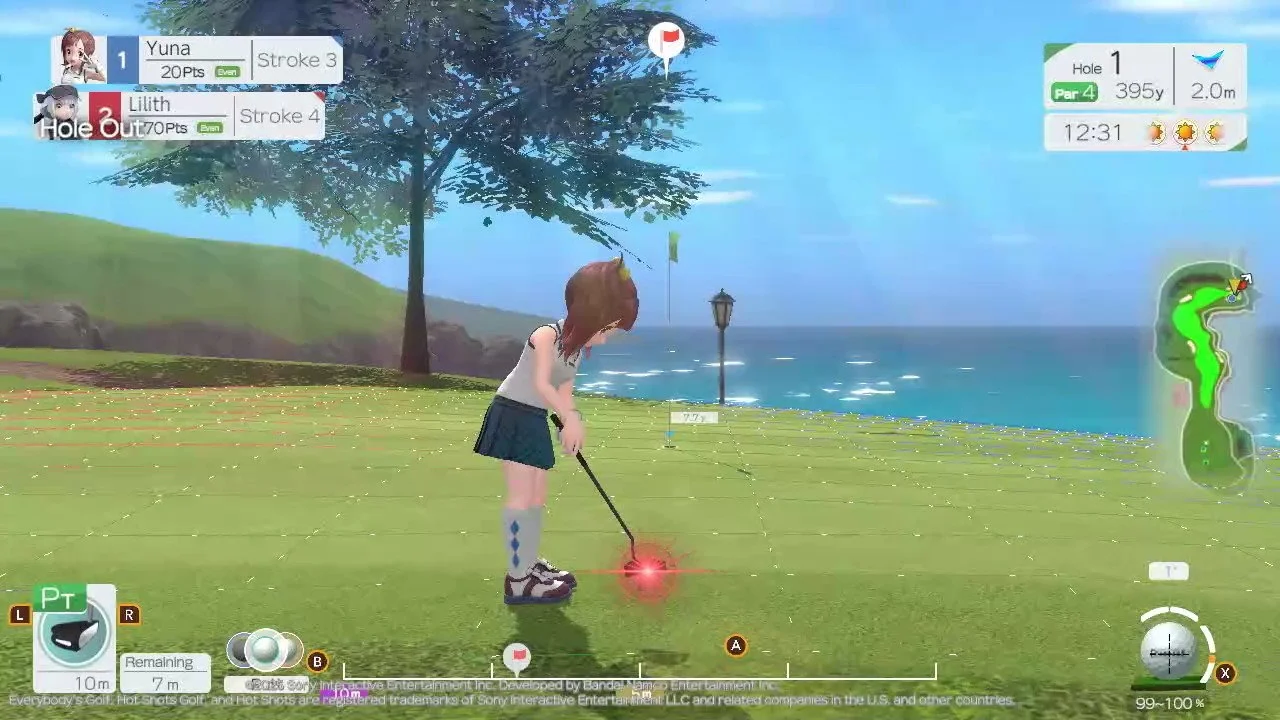Final Fantasy XVI Review - This Fantasy Is Never Final
/When I think about the long-running Final Fantasy series, my mind goes back to the golden era of JRPGs during the reign of the original Sony PlayStation - games that delivered the epic adventures of a band of unique characters with narratives that usually led to world-ending final acts. But the true constant with the series lies in its ability to create an entirely new set of characters and worlds each time a new mainline entry rolls out and delivers memorable experiences that result in a rabid fanbase for that particular title.
Familiar characters like Moogles or iconic summons such as Bahamut return time and again in different forms, with changes to combat mechanics that make each title distinguishable, even from a gameplay perspective. Square-Enix’s latest entry, Final Fantasy XVI, is no different, but it leans heavily towards being a more action-oriented adventure sprinkled with basic RPG elements. I was worried about the series shedding more of its JRPG roots when this title was first introduced, as recent entries have been straying away from more traditional forms for years. But my fears faded in the first five chapters of FFXVI; the essence of what makes Final Fantasy so great shines brightly here, and as such, this is one of my favorite high fantasy adventures this generation.
An epic tale with timeless appeal
You need an open mind for Final Fantasy XVI, especially if you’ve only played the titles from the PSX and PS2 days. Square Enix and the Creative Business Unit III team delivered a title packed with multiple set pieces to ‘wow’ new and old players alike with its larger-than-life moments and flashy combat sequences. The game is narrative-heavy, accompanied by a combat system that made me feel as if I were playing the next Devil May Cry game. From afar, it all does seem like too much of a departure, but I assure you it's worth the pivot, as this is Final Fantasy reaching for greater heights, and nailing it.
The game starts with a strong prologue, which everyone can now play through the game’s demo. You play as Clive Rosfield, who’s my favorite main character in a long time. He does check most of the boxes of a typical JRPG hero with spiky hair and good looks, but the similarities end there, as even a few hours in, you can already see multiple layers in his personality, so it became easy to root for him during his highs and feel emotional at his lows.
The beauty of Final Fantasy XVI’s cast of characters is that they are fleshed out in the same manner as Clive, which prevents them from being one-dimensional. From the villains of the story to the blacksmith that assists you in improving your equipment, this game slowly takes its time with its characters, so by the end, you’ll probably end up liking some and hating others. Even simple banter can often be profound or lighthearted.
All of this works thanks to how well-developed each cutscene is, as the game never felt dull, nor did I feel encouraged to press the skip button. I was engaged at the very beginning thanks to the impressive voice acting, character animation, and writing that took hold of me and never let go. From this game’s version of Cid to Clive’s loyal companion Torgal, the robust bunch of characters leave a lasting impression that I feel compelled to do side quests just so I can learn more about them.
The beginning of Final Fantasy XVI goes all-out to make the statement that you’re in for a ride, but everything slows down a few chapters in as you progress through various regions and towns, solving their current issues that block your progress through the main story. These distractions are the typical JRPG storylines, and they mostly pay off, as we get a better understanding of the world, its many issues, the people’s struggles, and what happens when nations and individuals do all they can to stay in power, regardless of the cost. In true Final Fantasy fashion, its final act doesn’t disappoint as its conclusions hit the right spots. It was an insane mix of crazy set pieces that kept me glued to the screen.
This is a political drama that was easy to digest, despite all of its many unique terminologies, factions, and characters being thrown at you left and right. A story like this can be as intimidating as any of the high-fantasy novels out today, but it’s also just as captivating once you have enough of its world settled in your head.
Uh, Can You Remind Me Who That Is, Again?
The team at CBU3 realized the complexity of the story they created, so they implemented one of the best storytelling features I’ve ever encountered in a video game – the Active Time Lore. It sounds silly, but it’s greatly effective in preventing the player from getting lost in the story and the world-building, as it gives you the option to answer any lingering question that pops into your head as you watch each cutscene.
When you pause the game, you can press the DualSense controller’s touchpad to open up the Active Time Lore which gives you brief descriptions of terms and characters present in a scene. Let’s say you see a character you haven’t seen in a long time and have forgotten his role in the story. Pausing and entering the Active Time Lore will give you a brief description of the character, saving you enough bandwidth in your head to help process whatever revelations occur in the current scene.
This feature could be a game-changer for future titles in different genres that are scene-heavy, as it made this convoluted story and world easier to follow and brush up on, thus keeping my interest in the world intact, with hidden mysteries keeping me itching for more. You can get even more explanation, as there are two characters in the game specifically designed to get you up to speed on the current events of the world, complete with timelines, a character tree detailing the relationship of each one, and a dictionary on everything Final Fantasy XVI. It doesn’t completely negate the possibility of plot holes and confusion from the player as the world is a real handful, but it could have been far worse without these added features at the ready every time I needed some kind of clarification.
There’s only so much a scene can do, and with a main campaign lasting roughly 30 hours, it's only natural to forget a thing or two along the way, which is why it surprised me much how a simple feature like the Active Time Lore could greatly improve my enjoyment of the game, as I can refresh my memory with a press of a button, forgoing any need to look up, for example, what a Dominant is.
In between the game’s main campaign, Final Fantasy XVI is filled with the typical side activities. You have hunting boards for those looking for more challenging encounters, and side quests featuring simple ‘fetch this’ or ‘kill these’ activities that can be hit or miss depending on the short story attached to them. You then have access to a training room that feels similar to a fighting game’s training mode, the option to replay previous chapters right after completing them, or arcade-style boss encounters where you can compete against other players for high scores.
The game even has a New Game+ that will unlock if you wish to play from the start with your endgame unlocks. Final Fantasy XVI is packed with features, making the package feel complete as it’s shipped with all the bells and whistles intact and barely feels half-baked. It’s the complete Final Fantasy package that nowadays is sadly a rare sight in the video game industry.
A rarified blend of action, flair, and heart
Thankfully, despite it being more of an action game, Final Fantasy XVI’s combat is easier to grasp as it's an action system with just Clive as the only character you can control and improve while progressing through the game’s main story. There are guest party members that join you in certain sections and assist in battle, but you can’t give them commands or make them stronger in any way. Torgal, Clive’s trusty wolf companion, is the only character to whom you can issue commands, but they are minimal, and at best, his efforts serve as combo extensions, to launch an enemy to the air or as a means to recover lost health.
Progression is simple, as skill points let you unlock new abilities and upgrade previous ones, with equipment providing more damage and defense. There’s no Sphere Grid, no stats to worry about, elemental weaknesses, or even status effects like sleep or poison, as the RPG elements are kept at the minimum this time around. There’s not much thinking required, as all you need to do is equip gear with better stats and use the accessories that best support the skills you have in your loadout. I barely thought about focusing on a specific attribute or adding specific resistances. All I had to worry about was dealing enough damage to put my foes in a state to deal even more damage, but doing it all in the coolest possible way, of course.
Your options grow in depth as Clive unlocks new abilities. The combat can be complex, especially when you eventually have up to three elemental affinities to cycle through during battle, with two abilities attached to each one. There are a lot of abilities to choose from, as it was great experimenting to see which abilities synergize well in order to quickly dish out as much damage as possible when you put an enemy in a stagger (stunned) state.
My ability loadout felt like it was evolving every couple of hours, as somehow each combination I’d slap together always turned out to be a fun way to fight. Casual players will have an easy time grasping the system (especially with a story-focused difficulty option for those that just want the story) while the more action-oriented players will appreciate how deep the system can be, as you can juggle enemies into the air and connect multiple moves as stylishly and as efficiently as possible.
The combat feels satisfying and responsive, as even the simplest encounters in the game world are encouraging. You’ll feel cool as a cucumber when you go against big groups, as you’ll find yourself zipping across the battle space with ease, doing combos and dodging in quick succession without skipping a beat, then feeling amazing as you emerge the victor.
As you might imagine, the battle system is at its best during the many boss battles, where you’re faced with over-the-top set pieces with entertaining choreography and QTE button prompts that keep your excitement and adrenaline at a constant high. The only real issue I had was when I fought multiple enemies in narrow spaces, as the camera can be a bit too close to Clive; in these instances, I found myself always repositioning to have a better view of the action. It got a bit frustrating as the camera would move with the target I’m locked on, making things worse at times, especially against an enemy that doesn’t stay still.
Funnily enough, CB3 goes even further with the game’s 1-on-1 epic summon battles, where two colossal god-like beings battle it out. Most of them felt like kaiju VS kaiju standoffs written for a shonen anime’s season finale. The game goes off the rails in these sections, as it’s a spectacle to see these clashes on a big screen with close to no visual or technical issues to hamper the experience. While some of them were one phase too long for my taste, hardcore fans will appreciate iconic Final Fantasy summons like Odin or Ifrit taking center stage and being displayed in such an epic fashion. In these moments, Final Fantasy XVI feels like a fusion of Devil May Cry and Asura’s Wrath.
All the big and subtle moments are then accompanied by video game composer Masayoshi Soken’s original soundtrack. Final Fantasy XIV Online fans will get a treat here, but more importantly, newcomers will hear a soundtrack that I believe can rival classic soundtracks found in previous Final Fantasy titles from the distant past. The emotional moments hit hard with Soken’s score, and the big set pieces are infused with heart-pounding music that’s a mix of orchestra and rock - during some of these, I couldn’t stop smiling because of how well the music fits each scene. I rarely get moved by musical scores in games nowadays, but creative geniuses like Soken prove that it’s still possible to surprise me, and his work perfectly suits a more action-focused title like this one.
Top-notch quality befitting a top-tier series
When it comes to Final Fantasy XVI’s visuals, Square Enix and CB3 didn’t cut any corners, as the game looks stunning, from the environments to the character models. The quality stays consistent even in the most explosive moments with no major hiccup of any kind. There are minor FPS drops that occur when entering certain areas, with the game dropping below 60 FPS on Performance mode, but nothing too drastic or frequent. Quality mode felt rock solid at 30 FPS, and it all comes down to preference as you can’t go wrong with either graphical option. This game is polished from start to finish, as the developers were able to maintain the Final Fantasy series’ reputation of delivering a visually striking title for today’s standards.
It’s an impressive feat, as this game has a variety of different biomes and locations with jaw-dropping vistas and areas big enough that chocobo mounts can be used to cut travel time. This isn’t an open-world game like Final Fantasy XV, as it’s composed of multiple large areas that you can navigate through the game’s world map, which I greatly preferred, as I was able to seamlessly fast travel from one area to another with barely any load times in-between.
As I rolled credits on Final Fantasy XVI, I was left with the same feelings I had when I finished personal favorites such as Final Fantasy VII or Final Fantasy X. I was satisfied, broken, but smiling that I’d embarked on such a rare roller-coaster adventure that’s also full of heart. It was a rich story befitting the JRPG genre, and if you’re familiar with Final Fantasy titles from the past, despite their crazy antics, you just can’t help but applaud the team for embracing the series’ core characteristics, no matter how cliche they might be.
Between Square-Enix’s carefully crafted key characters, the slick combat system, and a world-shaking final act that only a Final Fantasy game can pull off, Final Fantasy XVI proves that the far-from-final franchise isn’t slowing down but rather going full throttle into a bright new arc; it’s in good hands despite recent changes to the formula. I’m a believer in the new direction the series has taken, and if and when we do see the formula shift again in the future, I’ll likely be optimistic enough to give them the benefit of the doubt.
10/10 (BUY)
PROS
A fantastic cast of characters splendidly brought to life by the animators and voice actors
Satisfying combat system that never gets old even after 30 hours of play
The Active Time Lore feature is a game changer
Over-the-top Eikon (summon) battles fueled to entertain
CONS
Camera angles can sometimes be troublesome in narrow sections of the game during combat
FPS dips slightly in certain parts of the game
What I’ve Played
Finished the main game with gameplay time of over 40 hours
Did a handful of side quests in different sections of the game
Completed almost half of the hunts on the Bounty Board
Finished the main game at level 43
Currently going through New Game+
*This review is based on a PS5 copy of the game that was provided by the publisher*












If you can get past Once Upon A Katamari's sticky controls and a general sense of deja vu, the many time periods, customizable cousins, unique challenges, and features make even a decades-old formula feel fresh again.